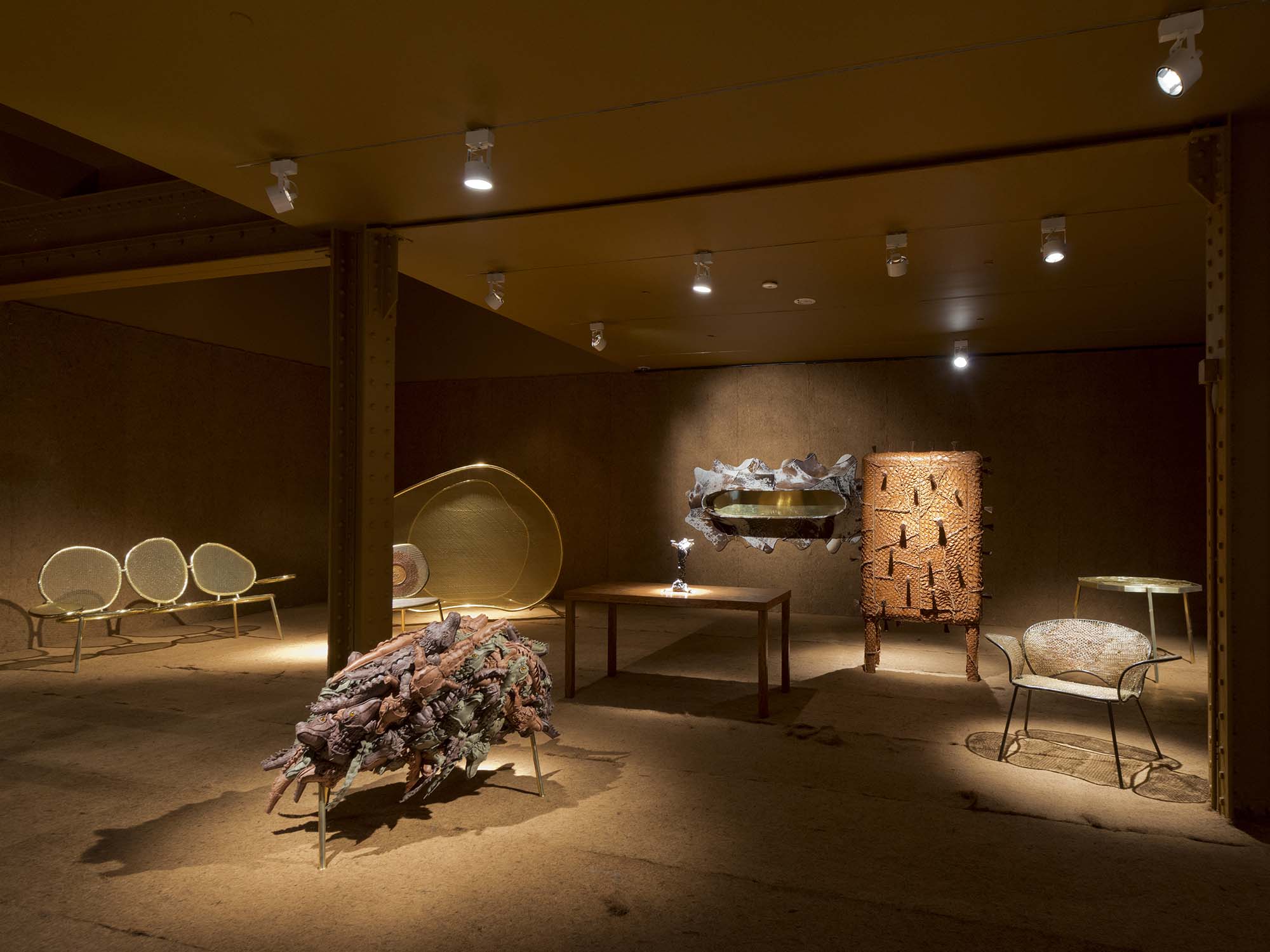By Glenn Adamson
Successful artists grow up in public, just as actors, athletes, and musicians do. For those of us on the sidelines, it is a fascinating process to watch. Creative development is so unpredictable; emerging talents may or may not realize their early promise. When they do, they branch out – almost by definition – in directions none could have foreseen. For those in that spotlight, this is the greatest of challenges. To invent something new in the world is one thing. To keep doing so when the eyes of the world are upon you is something else entirely.
The Campana Brothers have had that sort of life, and that sort of achievement. They formed their studio in 1984 (when Humberto was thirty-one years old, and Fernando only twenty-three), and almost immediately began attracting international attention for their work. Initially, as Cèdric Morisset explains in his essay for this catalog – a vivid first-hand account of the Campanas’ rise to prominence – they were poorly understood, even as they were celebrated. Freighted with the absurd expectation of representing all of Latin American design, their transposition of the vernacular bricolage for which Brazil is so well known could be misconstrued as a narrow gesture of regional identity, or else, a simple statement about ecological recycling. In fact, they were already expressing a much broader set of ideas, to do with cultural resiliency, tough-minded inventiveness, and above all, a vivid, individualistic freedom from the constraints of mass production. As Fernando puts it: “I would say we have, since the beginning, been looking for a new communication code to portray life.”
These values have since become pervasive in the design scene, and the Campanas could easily have settled into their role as forerunners of a certain model of practice, as well as spokesmen for the design scene of a whole continent. Instead they have done something far more interesting, shedding their skins again and again in a continual process of reinvention. As in the animal world, this metamorphosis has been a means of strength and adaptation, allowing them to build a practice that is far more than the sum of its diverse parts. Not for nothing was their recent retrospective exhibition at MAM Rio called 35 Revolutions – one per year of their studio’s operation. While they have tried, as Humberto remarks, “to be coherent with the beginning of our trajectory,” there have also been many discrete shifts in their approach, each unexpected in itself, but all adding up to one big change: “We have become much more complex.”
He gives as an example the Favela chair (1991), one of the Campanas’ early breakthrough objects, which takes its name and its improvised constructive logic – no two versions are exactly the same – from the buildings of Rio’s informal hillside communities. It was their passport into the international design scene, along with a series of chairs made by the equally inventive exigency of wrapping cord around metal frames, such as the Azul chair (1993), later developed into the famed Vermelha for Edra. Not unlike the contemporaneous work of Dutch designers associated with the Droog collective at the same time – they provided sculptural presence with a conceptual twist, a clear alternative to the sophisticated Italian-dominated industrial design scene.
For all that the Campanas’ early work was a successful incursion into new territory, the full implications of the ideas they contained would not become clear until much later. Humberto looks back on the Favela, in particular, with considerable pride, seeing it as fundamentally as an expression of optimism in the face of adversity. But when it was first made, he concedes, “we didn’t know the reality of the favela – we had faraway eyes.” That has certainly changed. Through the Instituto Campana, which the brothers founded in 2009, they are working in both remote places and urban neighborhoods, using design as a means of outreach, activating artisanal traditions with an eye toward cultural preservation. “Life has granted us so much,” says Fernando. “Now it is our turn to reciprocate.” And this impetus has, indeed, brought them into more complicated and difficult terrain. Today, their practice is both diverse and demanding. It partakes of the categories of art, design, architecture, and social work. While their overall philosophy is palpable in every object, it cannot easily reduced to a simple overall message, either of critique or celebration. As they tune receptively into their environment, which they do constantly, the Campanas see aspects of life that are both distressing and inspiring. All these contradictory conditions are reflected in their work.
This complexity was on full display in 35 Revolutions. The exhibition bristled with different moods, materialities, and modes of production. Large-scale installation elements – including a wall of terracotta bricks depicting open hands (a gesture of welcome, and a tribute to craft), and over a hundred shaggy vertical pillars composed of piassava (Brazilian palm) straw – bound the experience together. Even so, the dominant impression was one of extreme diversity. The exhibition attested to the fundamental strength of the Campanas’ design intelligence, founded in intuition and an affinity for materiality, while also demonstrating how broadly they have managed to apply it.
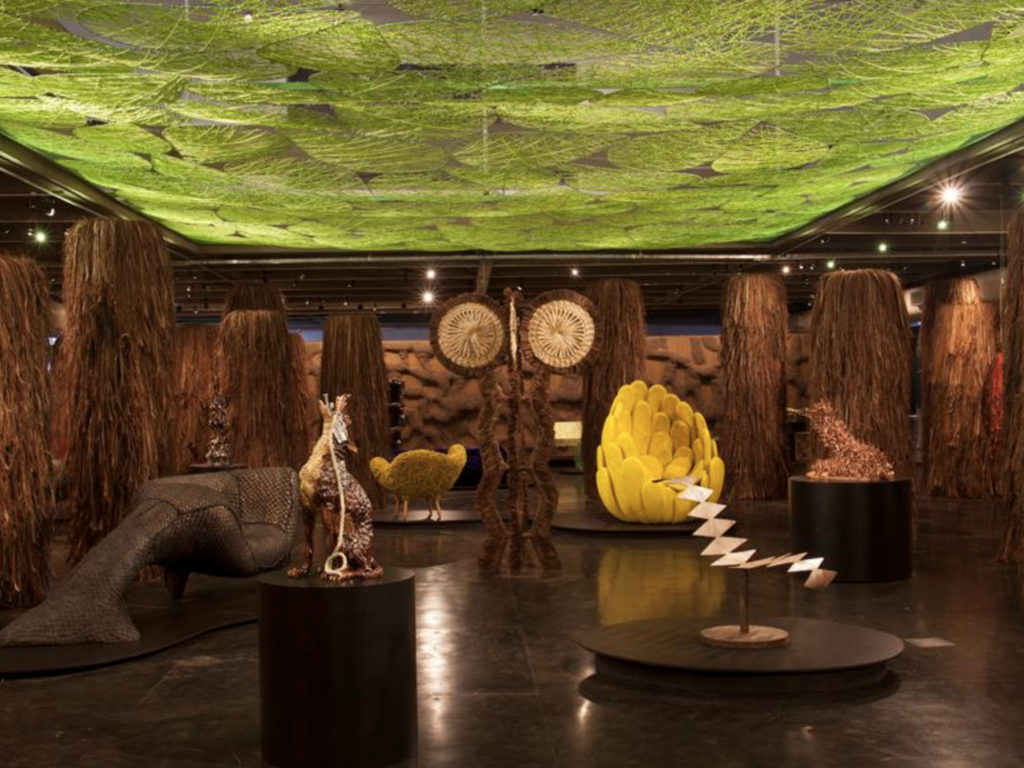
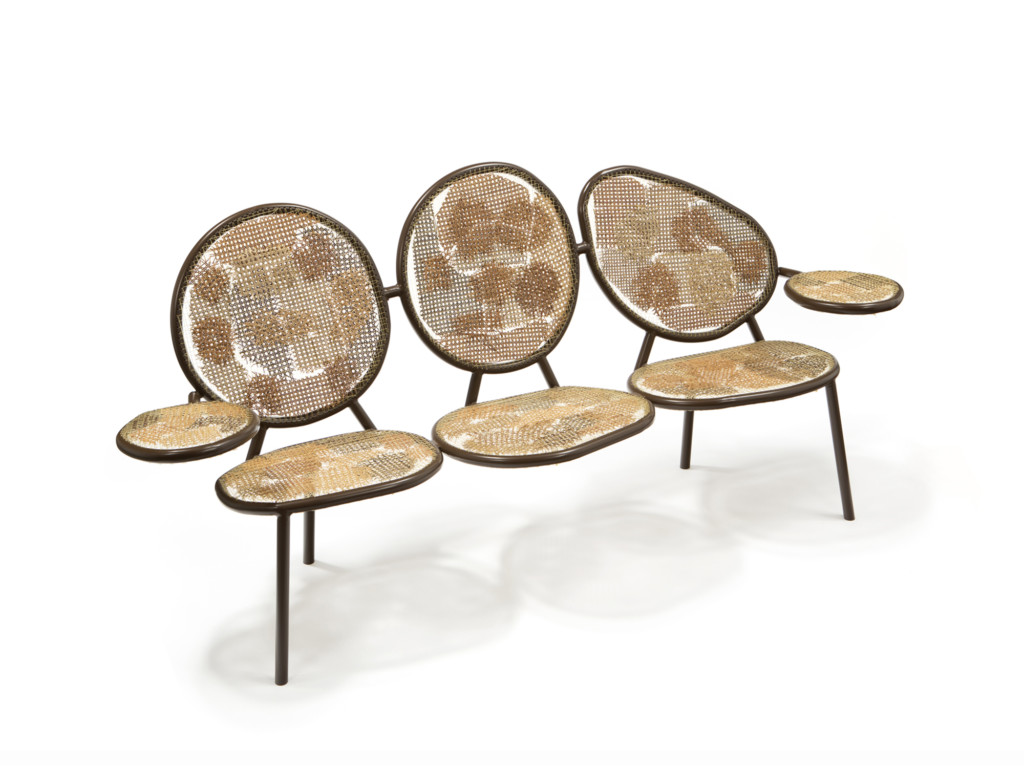
With this image in mind, let’s now take a step back, turning to their work of the past ten years, to see how their core principles have played out in practice. A good place to start – though it comes at the midpoint of the decade – is the Detonado series (2015), which was inspired, much as the Favela chair was inspired by the crates at a local fruitmarket, by a furniture restoration shop near the Campanas’ studio. Struck by the fragile beauty of the cutout cane fragments that littered the workshop – remnants of broken Thonet-style café chairs, which are commonplace in São Paolo – they conceived a poignant and poetic way to re-use them. By weaving nylon monofilament through the holes in the cane, its former strength could be restored, while also allowing for the sort of collaged composition that the Campanas favor.
When speaking of the Detonado series, Humberto has referred to himself as a sort of “therapist for objects.” Rather than denying the unruly aspects of the material environment – as designers who aim for clean functionalism invariably do – the brothers seek a deeper understanding, channeling anarchic energies in a positive direction. (Regarding this process of redirection and refinement, a comment by Fernando is telling: “My partnership with Humberto is very simple. One of us brings the raw idea and the other helps polish it.”) The title of the collection, which translates as “exploded,” aptly conveys this intention. It is as if the human life-force that was latent in the found material, imparted to it through manual labor, has found violent release. As so often in their mature work, construction and deconstruction serve here as counterpoints, the seemingly opposed vectors of disruption and restoration entwined in a single technique.
Here, then, is a key to understanding the Campanas: their works are the material resolution of two contradictory internal forces, with control and chaos held in equilibrium. That principle guides them through one experiment after another – they need no other rules to maintain their equilibrium. But as any psychotherapist will tell you, it’s not enough to recognize such a principle intellectually. You have to keep “doing the work,” as the phrase goes – applying hard-won insights to different aspects of experience. This has been their discipline over the past ten years. The series Ametista, Fitas, Ofidia, and Bolotas – additive compositions featuring rough amethyst crystals, metal strips, ropes cast in metal, and thick sheepskin, respectively – all are made in this spirit, simultaneously wayward and composed. Like the earlier Favela chair, too, these works share a certain degree of variation within established parameters. Yet each operates on quite different experimental territory, with its own emotional shadings grounded in the specific qualities of a material and its history. Ametista, for example, departs from the expected luxuriousness of a gemstone, in favor of the raw realism of rocks right from the mine, which punctuate nondescript glass volumes otherwise evocative of modernist fucntionalism. The Fitas and Ofidia series could be diagrams of the creative mind itself, working through endless convolutions – the former series in the more rigorous context of linear graphic design, the latter a more freeform process of building shapes in midair. And the Bolotas convey an impression of sumptuous magnificence – as if they were clouds descended to earth, just for our comfort – but also allude clearly to the Surrealist notion of anti-form, their amorphous shapes assembled into an alien domestic landscape.
The Cangaço collection, developed in parallel with Detonado, also has deep roots: the series takes its inspiration from peasant uprisings that occurred in Northeast Brazil around the turn of the twentieth century, what came to be known as the sertão. The cangaceiros were armed outlaws, somewhat romanticized in retrospect, but certainly quite real historically. They dressed in elaborate leather garments, which were suited to the harsh conditions in which they conducted their so-called banditry, but also richly embellished with ribbons and metal ornaments. In adopting this distinctive vocabulary for their collection, the Campanas once again drew on local craft knowledge – in this case, collaborating with the master saddler Espedito Seleiro, who realized the complex leatherwork forms – while weaving a national legend into their own narrative. There is, in the Cangaço collection, a knowing reflection of the Campanas’ own personae as emblematically Brazilian artists, and even as revolutionaries (albeit of a much less politicized sort). Yet these self-referential meanings are subtle, implicit. “We gave a continuation to the history of the sertão,” Fernando says; “There was no political mark behind it, though you could make such reading if you’d like. For us, all the pieces we create became characters and are free to be interpreted as people wish.” What comes across most strongly, perhaps, is a passionate respect for popular self-invention, achieved in the face of adversity. Here we can see how the Campanas have extended the seemingly straightforward “upcycling” methodology of their earlier work into a richer, more allusive framework, a conversation across time and space.
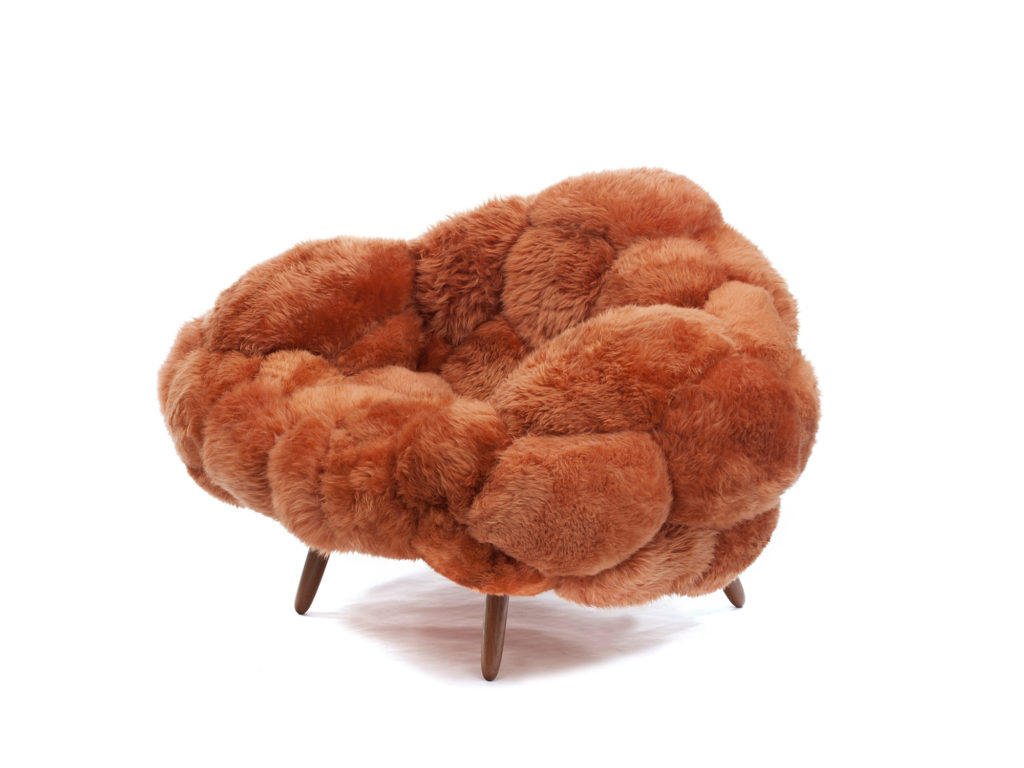
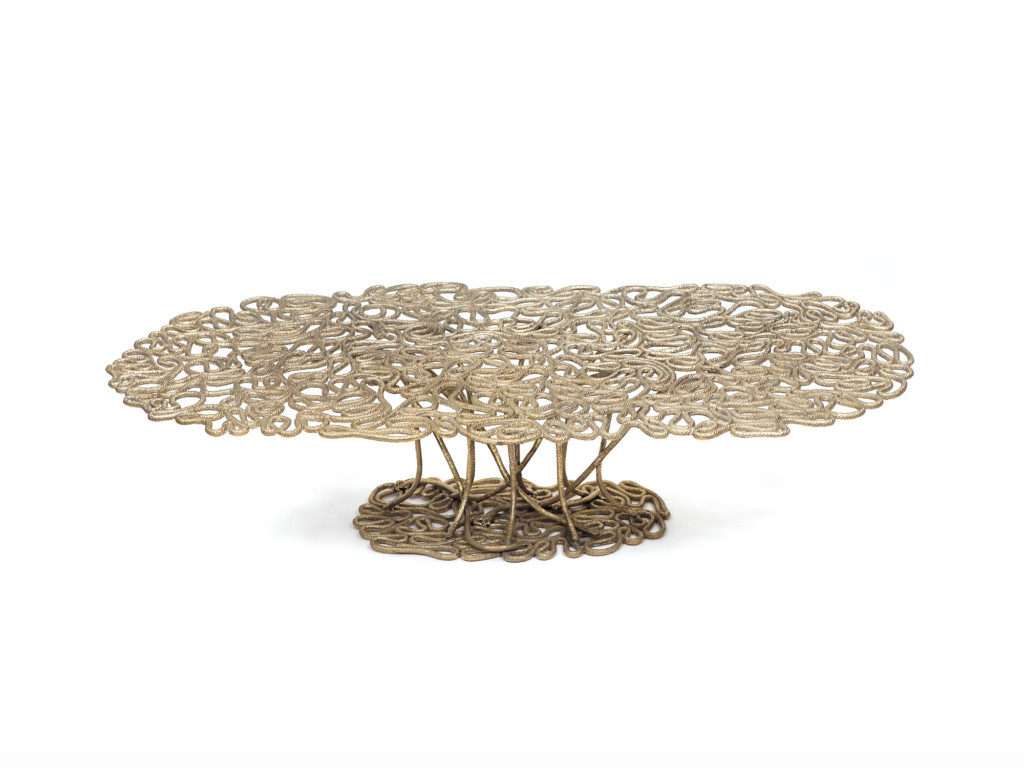
Even more expansive is their Pirarucu series (2013 and later), which engages with Brazil’s vast natural ecosystem much as Cangaço borrows from its cultural history. There is indeed a close parallel between the two collections: like the cangaceiros, the pirarucu is real enough, but seems like something out of legend. A giant ancient fish that dwells in the Amazon, it has historically been an important dietary staple for indigenous people in the region; more recently, NGO initiatives have brought sustainable farm propagation, to provide both food and income. Historically, nothing of the fish was wasted by indigenous communities, but in more recent years the pirarucu skin has typically been discarded. The Campanas – always alert to the potential of waste material – saw its possibilities as a dramatic upholstery material, while also (in Fernando’s words) “giving riverside communities proper training to guarantee a constant source of income.” Tanned and stretched over an armature, the inherent beauty of its irregular, lattice-like pattern is revealed, with each diamond-shaped scale edged by a delicate furl. Instead of hiding the seams between the pieces of skin, as a traditional upholsterer might want to do, the Campanas arrange them into asymmetrical patchworks, so that the seams slash their way across the curvature of a sofa, or the front of a cabinet.
Standing before the Pirarucu furniture, one can still feel the muscular presence of the primordial creatures. There is something awe-inspiring here, even monstrous. Over the next few years, as the Campanas developed their work in a new, more self-aware direction, the pirarucu continued to play a role; it seems to have unlocked an energy that had previously lay dormant in their practice. Right from the start, they had mixed the fish skin with other materials – clusters of bamboo, or cast bronze elements for the feet of chairs. These experiments, alongside other parallel investigations, culminated in the charismatic gravitas of their exhibition Hybridism (2017). One of the most powerful pieces in the presentation was the Sereia Pirarucu (“Pirarucu Mermaid”), in which the tanned skin was juxtaposed with a bronze casting, the fish’s scales fixed in burnished metal. The wildly asymmetrical, three-legged composition seems to pour itself out into space, an image of excess, an emblem of life out of balance.
That somber new note – or rather, orchestral chord – rang out all the way through Hybridism. It was a thrilling show, replete with visual and narrative interest, but also conveying an overall, unmistakable air of dread. In retrospect, Humberto describes the exhibition as “a portrait of our dystopian times of populism, deforestation, fake fascism.” Perhaps the clearest indication of this mood was the Noah series, the mordant title alluding, of course, to Biblical deluge. In place of the lovable plush toys that have so long populated the Campanas’ furniture, the pieces are populated by animals cast in hard bronze or aluminum, arranged in vertiginous, tumbling configurations: another collage of everyday life. This depiction of the natural world in free fall is arrested, in several works, by a thick agglomeration of woven fabric. Instead of the loosely arranged cord used in their earlier designs, the Noah pieces feature a thick, tight, claustrophobic carapace of fabric in acidic colors.
Desperate furniture for desperate times, one might think. Yet it is by no means devoid of hope. The very notion of “hybridism” contains within it the possibility of new solutions arrived at through unexpected connections – of disparate materials, between high and low, across multiple disciplines of making and thinking. As the Campanas have pointed out, that principle is itself intrinsic to Brazilian culture, particularly in their city of São Paolo, which has been formed through the interaction of many different peoples. If we must see them as expressing some national character through their work, it is the opposite of what people usually mean by nationalism – not an unshakeable certainty regarding identity, but a restless, combinatory curiosity. Perhaps unsurprisingly, the saturnine tone of the Hybridism show did not last long. Just a year after launching the Noah collection, they unveiled their latest material experiment. Entitled Sobriero (the Portuguese name for cork oak) this initial capsule collection included just four pieces, each of which offered a unique approach to sculpting cork, one of our most sustainable and recyclable materials. One cabinet was made by fusing together a cork agglomerate with clay – another example of hybridism, of an entirely generative kind. Also in 2018-19, in keeping with this optimistic spirit, they launched a collaboration with the artist Brian Donnelly (better known as KAWS). Fusing their sensibility with his, they arrived at objects that fizz with potent Pop vitality yet also have a poignant undertow. All those Berts and Ernies and Elmos and Snoopys, eyes X’d out, tumbled into heaps and propped up on legs of solid bronze: a self-conscious monument to the global consumer culture in which we all find ourselves, together.
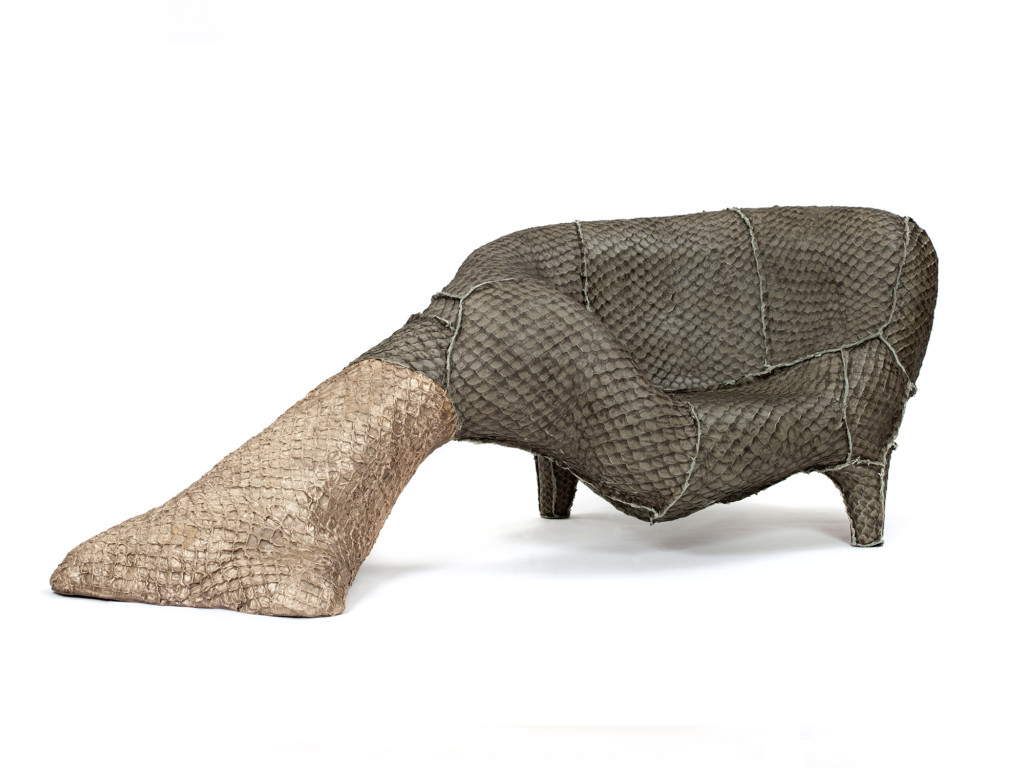
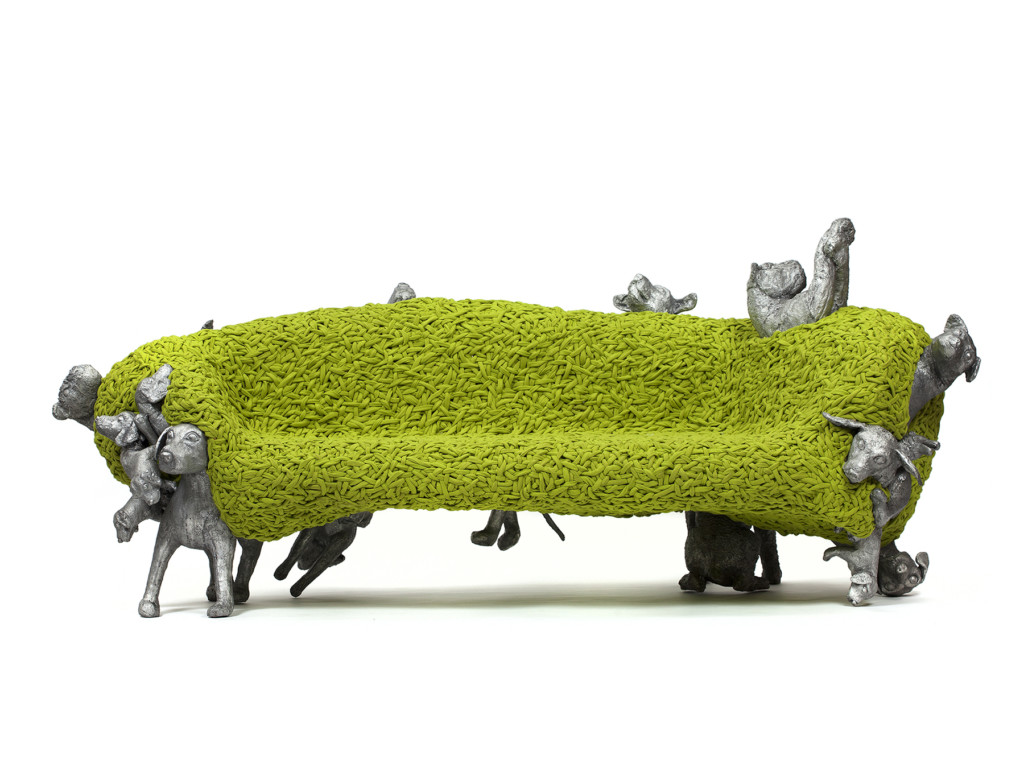
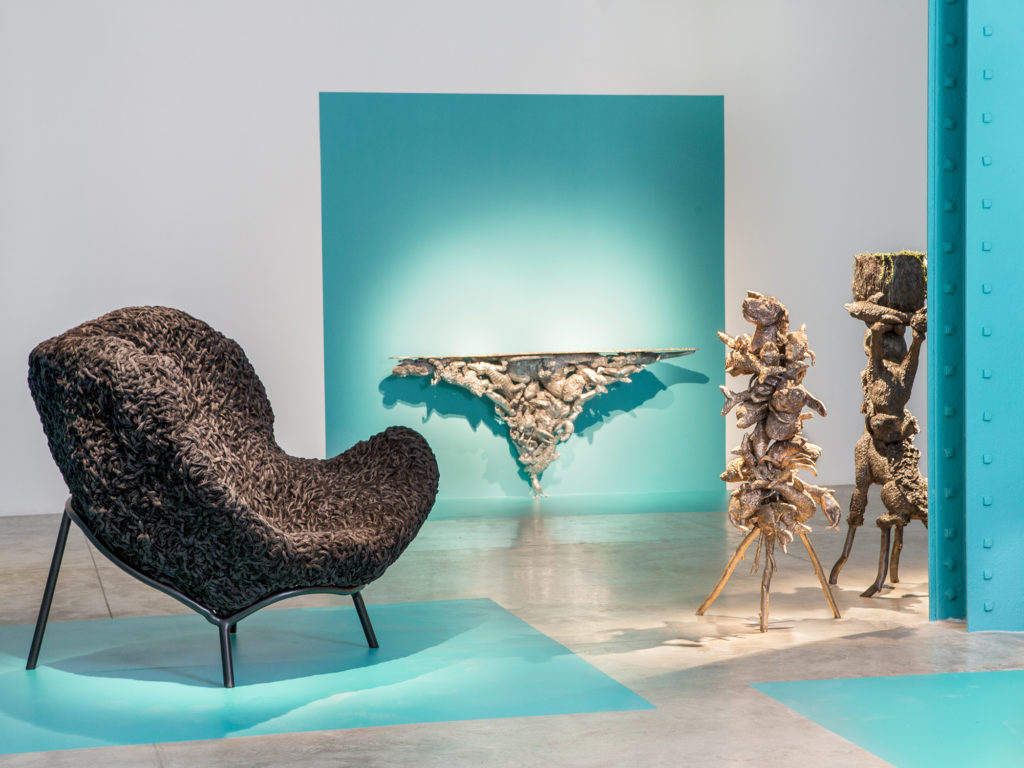
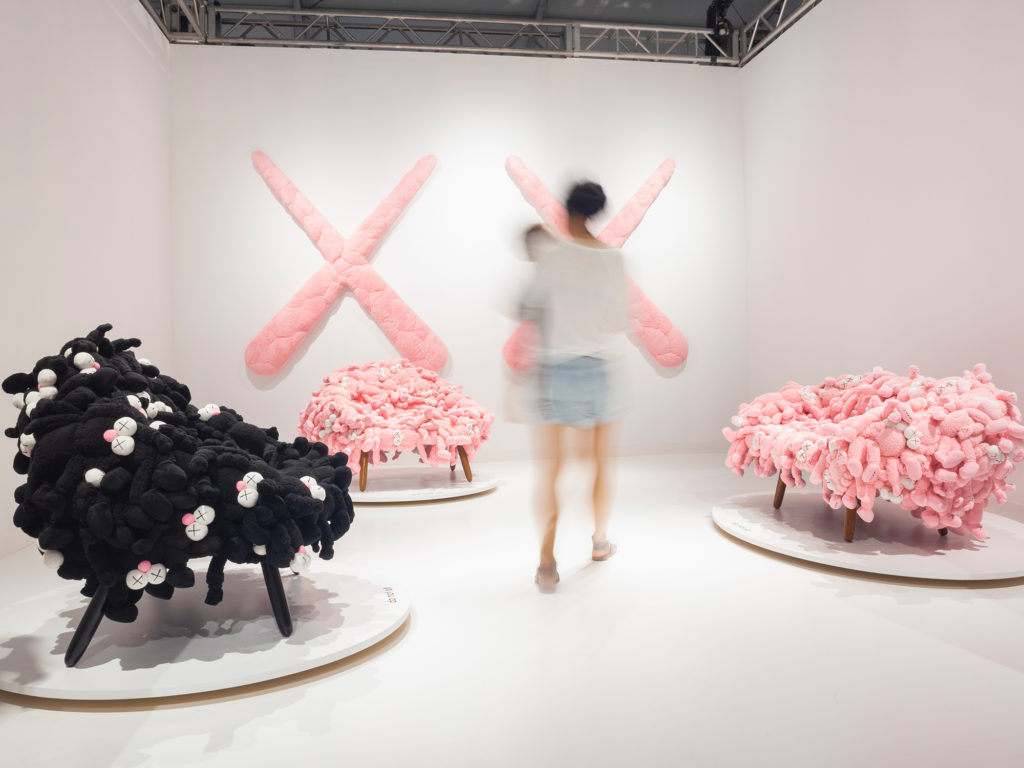
And now? In 2020, when the world has ground to a stop? One might think that it would be a difficult time for the Campana Brothers. Their unstoppable creative energy, after all, is not an ideal match for the pandemic-imposed quarantine. Yet Humberto believes that “this crisis will push us to grow.” He has concentrated on making photographic assemblages – more or less what he and Fernando have been doing all these years, through other means. Fernando, meanwhile, has struggled as so many of us have: “I don’t identify with the virtual way of life that we have today… it is totally out of my way of being.” Like Fernando, he remains deeply anchored to the creativity and community embodied by Estudio Campana: “I cannot separate myself from it, as it is part of my soul. The application changes, whether it’s a drawing, a collage, or a sculpture, but the studio is always present somehow.”
With this in mind, the brothers have worked hard this year to ensure that their staff, and the larger community of artisans that have served as their fabricators and collaborators, are impacted as little as possible. In ways great and small, they are holding to the values that have brought them this far – not the least of which is simple generosity. And, yes, continuing to grow, much as nature evolves, unpredictably and at varying speeds, but always in response to circumstance. Countless metamorphoses are behind them, and doubtless more to come. Through it all, they have achieved the hardest thing for artists who are buffeted by the winds of good fortune, and the many challenges that opportunity brings. They have remained themselves.
This essay was originally published in gallery catalogue Campana Brothers, Friedman Benda, October 2020.
